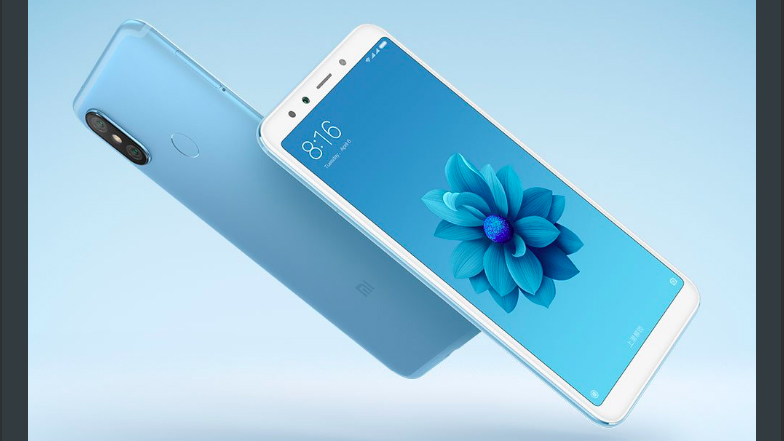Best Xiaomi Mi 6X features: Is this what the Mi A2 will look like?
Here's what we liked

Xiaomi has announced the long-awaited Mi 6X smartphone in China on Wednesday. It is the successor to the Mi 5X aka Mi A1 in India.
With the Mi 6X, Xiaomi has differentiated itself from the Redmi series without increasing the price of the phone. It has a different design and form factor with a smaller battery, a different camera and the latest version of Android.
In China, the Mi 6X has three RAM variants— 4GB/32GB, 4GB/64GB and 6GB/128GB. Price starts at CNY 1,599 (approx. Rs. 16,900) for the base variant, while the 4GB RAM and 64GB storage option costs CNY 1,799 (approx. Rs. 19,000). The high-end variant has a CNY 1,999 (around Rs. 21,000) price tag. It will go on sale in China starting 10am local time on Friday, April 27.
The Mi 6X is made for China, but the phone may make it to India with some changes as the successor to the Mi A1. At most, we can expect the Android One certification, as it was very well-received by Indian users.
Until then, lets take a look at the best features of the Mi 6X.
AI powered dual-camera
One of the major upgrades this time is the camera, now it has AI integration to enhance photo reproduction quality. The camera looks solid for low-light pictures on paper, it has a 20MP Sony IMX376 sensor with f/1.75 aperture and fixed focal length. This means the Mi 6X/A2 focuses on selfies too.
The back of the phone has a 12MP primary camera with a Sony IMX486 sensor of f/1.75 aperture and 1.25-micron pixel size. The secondary camera is exactly the same as the front camera sensor but with 1-micron pixel size.
Get daily insight, inspiration and deals in your inbox
Sign up for breaking news, reviews, opinion, top tech deals, and more.
While the setup seems promising on paper, it is further backed by AI scene recognition for enhancing colours, and to reproduce natural looking portrait pictures. To recall, the Mi A1 was rated the best sub 15K smartphone camera by us, and we expect the same with this one.
Up-to-date chipset
The Mi 6X runs Qualcomm's Snapdragon 660 oct-core chipset (4x2.2GHz Kyro 260 cores + 4x1.8GHz Kyro 260 cores) at its heart. It’s the same chipset that powers the recently launched Nokia 7 plus and has done really well in our tests. On the basis of our experience with the Nokia 7 plus, the 6GB RAM variant of the phone is likely to offer smooth performance.
Sleek design
The Mi 6X retains the design language of its predecessor, but there have been a few additions on top. Like the Redmi Note 5 Pro and new Mi Mix 2S, the Mi 6X also has a vertical iPhone X-like dual-camera design.
At 7.3mm the Mi 6X looks sleek and shares its resemblance with the Mi A1 from the back. But the front has seen major changes, the 5.5-inch 16:9 display has been upgraded to a new 18:9 FHD+ display measuring 5.99-inches. It results in minimal bezels and more screen space.
Connectivity and sensors
It is priced affordably, but the Mi 6X doesn’t compromise on connectivity options and sensors. It has all the basic connectivity options like 4G LTE, dual-band Wi-Fi a/b/g/n/ac, Wi-Fi Direct, Miracast, Bluetooth 5.0, IR emitter and a USB Type-C port.
To recall, the Mi A1 was the only phone under this price range to have a USB Type-C port, while phones like Redmi Note 5 Pro, Zenfone Max Pro M1 and Honor 9 Lite still use a microUSB port.
The phone, aside the complete set of connectivity options, packs all the basic sensors too. It has accelerometer, ambient light sensor, gyroscope, proximity sensor and fingerprint sensor.
Latest software
Unlike the Redmi Note phones from Xiaomi, the Mi 6X ships with Android 8.1 Oreo out of the box. The Chinese variant will have a MIUI 9.5 skin atop. As already mentioned, if it debuts in India, it’s most likely going to run stock Android.
What’s more?
The smartphone has a 3010mAh battery, with Quick Charge 3.0 support. Notably, the 3.5mm jack is absent, but we assume the company will provide a converter in the box. Still, it might be a deal breaker for some.
It has face unlock and also has AI-powered translation, that can convert text from Chinese languages to English, French, German, Spanish, Japanese, Korean and Indian languages.
Sudhanshu Singh have been working in tech journalism as a reporter, writer, editor, and reviewer for over 5 years. He has reviewed hundreds of products ranging across categories and have also written opinions, guides, feature articles, news, and analysis. Ditching the norm of armchair journalism in tech media, Sudhanshu dug deep into how emerging products and services affect actual users, and what marks they leave on our cultural landscape. His areas of expertise along with writing and editing include content strategy, daily operations, product and team management.
